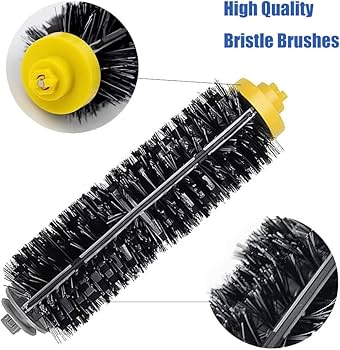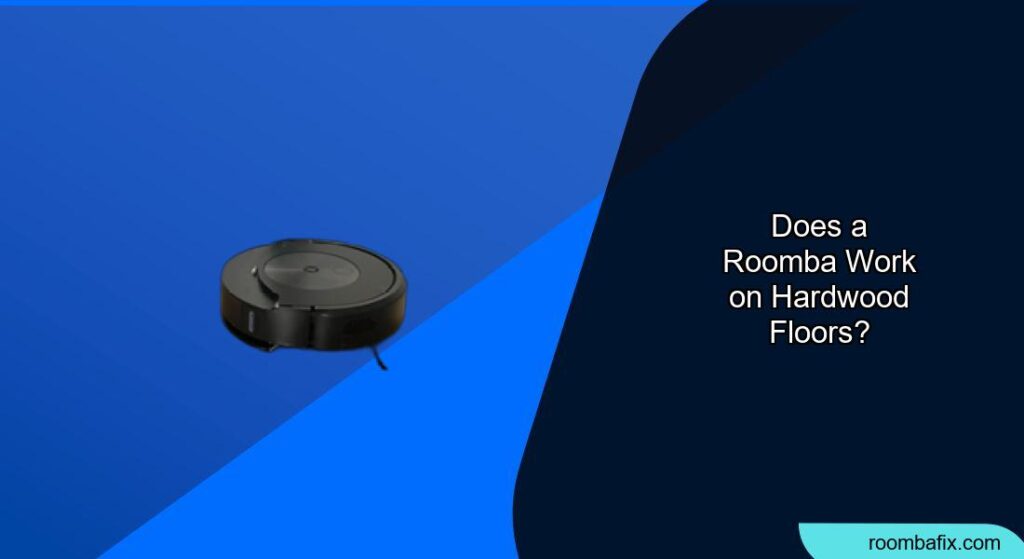Do you have beautiful hardwood floors and want to keep them clean without the hassle of constant sweeping and vacuuming? A Roomba might be the answer. These robotic vacuums have become increasingly popular, but how effective are they on hardwood? This article dives deep into whether a Roomba works on hardwood floors, exploring their features, benefits, and potential drawbacks to help you decide if one is right for your home.
Many homeowners love the convenience of a Roomba, especially those with busy lifestyles. A Roomba can save time and effort, allowing you to focus on other tasks while keeping your floors tidy. We’ll cover everything you need to know to make an informed decision, from selecting the right model to optimizing its performance.
This guide will cover how Roombas handle hardwood, the features that make them suitable, and tips for maximizing their cleaning effectiveness. You’ll also learn about potential issues and how to address them, ensuring your hardwood floors stay clean and scratch-free. Let’s explore the world of Roomba and hardwood floors.
How Roombas are Designed for Hardwood Floors

Roombas are specifically designed to be gentle yet effective on various floor types, including hardwood. Several features contribute to their suitability for hardwood floors:
- Soft Bristle Brushes: Most Roomba models come equipped with soft bristle brushes that gently sweep across hardwood floors without causing scratches. These brushes effectively capture dust, dirt, and debris without damaging the finish.
- Adjustable Cleaning Heads: The cleaning heads of Roombas can automatically adjust to different floor heights. This adaptability ensures optimal contact with hardwood floors, maximizing suction and cleaning performance.
- Gentle Suction Power: Roombas are designed with appropriate suction power to lift dirt and debris without being overly aggressive on hardwood floors. This balance helps prevent scratches and damage.
Benefits of Using a Roomba on Hardwood
Using a Roomba on hardwood floors offers several advantages:
- Convenience: Roombas automate the cleaning process, allowing you to schedule cleanings and maintain tidy floors with minimal effort.
- Time-Saving: Instead of spending time sweeping or vacuuming, you can focus on other tasks while the Roomba takes care of the floors.
- Consistent Cleaning: Roombas provide consistent cleaning, ensuring that dust and debris are regularly removed, which helps maintain the appearance and longevity of your hardwood floors.
- Accessibility: Roombas can easily navigate under furniture and in tight spaces, reaching areas that are difficult to clean with traditional methods.
Choosing the Right Roomba Model for Hardwood Floors
Selecting the right Roomba model is crucial for optimal performance on hardwood. Consider these factors:
- Brush Type: Look for models with soft bristle brushes specifically designed for hardwood floors. Avoid models with stiff or abrasive brushes that could potentially scratch the surface.
- Suction Power: Choose a Roomba with adjustable suction settings. This allows you to customize the suction power based on the amount of dirt and debris on your floors.
- Navigation Technology: Opt for models with advanced navigation technology, such as iAdapt or vSLAM, which allows the Roomba to efficiently map and clean your home without missing spots.
- Filtration System: A high-efficiency filter is essential for capturing allergens and fine particles, improving the air quality in your home while cleaning your hardwood floors.
Preparation Steps for Roomba Cleaning
Before letting your Roomba loose on your hardwood floors, a little preparation can go a long way:
- Clear the Area: Remove any small objects, cords, or clutter from the floor. This prevents the Roomba from getting stuck and ensures a thorough cleaning.
- Secure Loose Rugs: If you have area rugs, make sure they are securely anchored or temporarily remove them. This prevents the Roomba from getting caught on the edges.
- Inspect for Hazards: Check for any potential hazards, such as loose nails or splinters, that could damage the Roomba or your floors.
- Initial Sweep: For the first few cleanings, do a quick manual sweep to pick up any large debris that might overwhelm the Roomba.
Optimizing Roomba Performance on Hardwood

To get the best results from your Roomba on hardwood floors, consider these tips:
- Regular Cleaning Schedule: Set a consistent cleaning schedule to prevent the buildup of dust and debris. Daily or every-other-day cleanings are ideal for maintaining tidy floors.
- Empty the Dustbin Regularly: Empty the dustbin after each cleaning session to ensure optimal suction power and prevent the Roomba from spreading dirt back onto your floors.
- Clean the Brushes: Regularly clean the brushes to remove tangled hair and debris. This ensures that the brushes can effectively sweep and clean your hardwood floors.
- Virtual Walls: Use virtual walls or boundary strips to confine the Roomba to specific areas or prevent it from entering certain rooms.
Addressing Common Issues
Even with the best preparation, you might encounter some common issues:
- Roomba Getting Stuck:
- Solution: Clear the area of cords and small objects. Use virtual walls to block off problematic areas.
- Uneven Cleaning:
- Solution: Ensure the brushes are clean and properly installed. Check the Roomba’s sensors and clean them if necessary.
- Battery Life Issues:
- Solution: Replace the battery if it’s old or not holding a charge. Ensure the charging base is properly positioned and connected.
- Scratching:
- Solution: This is rare, but if noticed, ensure that the wheels and brushes are clean and free of debris. If you still notice scratching, you may want to discontinue use.
Tips, Warnings, and Best Practices
- Safety First: Always follow the manufacturer’s instructions and safety guidelines when using a Roomba.
- Monitor Initial Cleanings: Observe the Roomba during its first few cleaning sessions to identify any potential issues or areas that need adjustment.
- Avoid Wet Floors: Do not use the Roomba on wet or damp floors, as this could damage the device and your hardwood floors.
- Regular Maintenance: Perform regular maintenance, such as cleaning the brushes and emptying the dustbin, to ensure optimal performance and longevity.
Conclusion
So, does a Roomba work on hardwood floors? Absolutely! With the right model and proper usage, a Roomba can be an invaluable tool for keeping your hardwood floors clean and well-maintained. By understanding how Roombas are designed for hardwood, choosing the right model, and following our tips for optimizing performance, you can enjoy the convenience of automated cleaning without compromising the beauty and integrity of your floors.
Take the next step toward effortless cleaning by researching Roomba models suited for hardwood. Embrace the convenience and enjoy the lasting beauty of your pristine floors.
FAQ
How often should I run my Roomba on hardwood floors?
For optimal results, running your Roomba on hardwood floors daily or every other day is recommended. Regular cleaning prevents the buildup of dust and debris, maintaining the appearance and cleanliness of your floors. Adjust the frequency based on your household’s foot traffic and the amount of dirt that accumulates.
Can a Roomba scratch my hardwood floors?
When used correctly, a Roomba is unlikely to scratch hardwood floors. Most models are equipped with soft bristle brushes and adjustable cleaning heads designed to be gentle on surfaces. However, it’s essential to clear the area of sharp objects and regularly clean the brushes to prevent any potential damage.
What type of Roomba is best for pet hair on hardwood floors?
If you have pets, consider a Roomba model specifically designed for pet hair. These models typically feature stronger suction power, tangle-resistant brushes, and high-efficiency filters to capture and contain pet dander and hair effectively. Look for models like the Roomba i7+ or j7+, which are known for their pet-friendly features.
How do I clean the Roomba brushes to maintain hardwood floor safety?
To clean the Roomba brushes, first, remove them from the device. Use a pair of scissors or a brush cleaning tool to carefully remove any tangled hair, threads, or debris. Rinse the brushes with water and allow them to dry completely before reattaching them. Regular cleaning ensures the brushes remain effective and gentle on your hardwood floors.
Are there any specific settings I should use on my Roomba for hardwood floors?
When using a Roomba on hardwood floors, adjust the settings to suit the surface. Use a lower suction setting to prevent the Roomba from being overly aggressive, which could cause wear over time. Utilize the virtual wall or boundary strip features to protect delicate areas or prevent the Roomba from entering certain rooms.
Can I use cleaning solutions with my Roomba on hardwood floors?
Avoid using cleaning solutions directly with your Roomba unless the model is specifically designed for wet mopping. Using unauthorized cleaning solutions can damage the Roomba and potentially harm your hardwood floors. For models that support wet mopping, use only the recommended cleaning solutions and follow the manufacturer’s instructions.

